Object Protection Systems


A museum object protection system is a system that is dedicated to the protection of a museum object on display. This document is a quick overview and we hope to have more detailed information for download soon. Check the bottom of the page to see if any have been posted yet.
This document does not address simple methods for protecting objects on display such as screwing two dimensional items to the wall using boiler plate, or similar hanging methods, or some “tricks of the trade” like attaching fishing line to silverware displayed on the table in a period room to make a theft more obvious and difficult. This article addresses technology-based object protection systems. We do not go into great detail but try to give you enough facts that your alarm dealer or a good tinkerer on your staff or in your volunteer corp can build one for you or you can track down the manufacturer and buy one.
This is a non-commercial website and we do not promote or endorse any product. We do list leading products that have been found by this committee’s members to be effective and reasonably priced and tell you where to find them. If you manufacture a similar product and want it listed, contact the Webmaster with details.
For years the state of the art in object protection systems was one of two types of devices. Stand-alone devices that use an infrared “beam” across the object (or the entire period room in a house museum) and radio transmitters that fit behind a painting or even inside an object like a vase. A;most any type of detection switch can be added like a mercury switch, magnetic contact, etc. These are effective and can be quite affordable. Here is a brief explanation of each before we move on to the current state of the art systems and technologies.
With the infrared detectors, a motion detector that uses a curtain protection pattern is selected. These protect a four inch wide, floor to ceiling “wall” in front of a row of paintings or project across a room. If they are connected directly to the alarm system, that’s all you need unless you want a local alarm to sound and then you must also install a small sounder. Most museums don’t connect them to the alarm system for several reasons, one of which is the cost and another is that they don’t want the police to respond every time someone touches something. By connecting a motion detector, a power supply or transformer or just a battery to the detector and by attaching the sounder, you can often plug in the transformer to an outlet in a period room and project a beam across the room. To protect artwork in a gallery, mount the detector on the ceiling projecting its curtain downward and outward across the wall and run the wire back to the closet containing the power supply. Project the curtain of infrared across the wall of paintings as close to the wall as possible and when someone leans into the invisible curtain, the alarm will sound. You can explain this to your alarm company and they can build such a device for you. If you have trouble finding a motion detector with a curtain pattern, call the committee chair and we will help.
The second system used for years is to place a small wireless transmitter behind a painting, connect a magnetic contact or impact sensor to the transmitter (and the switch to the painting’s frame). When someone touches the painting hard enough or pulls it from the wall, it will transmit a silent signal to the alarm panel in a closet and cause an alarm to sound. Transmitters are getting very small so even some very thin framed photographs or prints can be protected this way. The leading system of this type used in museums is the Inovonics system. GE also has a wireless alarm system with small transmitters. And both systems have wireless motion detectors that you can use inside a display case to protect the contents. Because infrared won’t penetrate the plastic vitrine or glass, they are very reliable. Your alarm company may have other systems available that will also work but if you plan on making a large investment in these systems, that is, you need a lot of transmitters or plan to also protect exhibit cases, stick to one of the industry leaders.
In recent years a product has been developed that is relatively inexpensive and effective. It is called Artguard, not to be confused with a product of the same name that was widely used in the 1980’s in museums and went out of business. Artguard uses a GE wireless system and their own unique transmitters that attach to the frame and hanging wire of a painting in an ingenious manner. Since this system is specifically made for museum use you may prefer it to the generic transmitter system or local audible alarm system like Inovonics, so check it out before making a buying decision.
The latest state of the art technology for protecting objects on display is CCTV. Digital CCTV enables you to use a draw tool that is part of the software to draw a box over the face of a painting or object as they appear on the CCTV monitor. This activates that portion of the picture and when someone reaches into the protected area, the camera sends a signal to the computer and alerts the attendant. For this to be effective you need to place the camera in just the right place in the room, so these systems can be expensive. Almost any DVR system has motion detection features and can be used but to do it right you need video analytics. The best system of this type and widely used in museums with great success is the Acuity-vct. Some systems on the market are more powerful than the Acuity-vct and are used by the Defense Department and major corporations but they are the proverbial Rolls Royce on your Chevy budget and quite frankly, don’t work any better at double the cost. Other companies claim to be as good as the Acuity-vct and they are, until you need to protect a troublesome piece such as something shiny, something moving, or a lot of small items on one screen. Then they false alarm and false alarms are intolerable.
In our section “Tips, Tricks, and Devices” we show some very inexpensive and basic alarm devices that can be used for object protection in a pinch. This committee thought long and hard about whether it is wise to show them to you because we are certain that in spite of our warnings, some museum will use them when they really should not. Only the poorest of the poor should use these “el cheapo” devices as they are often called. But if you have no other choice, visit that page and see some really cheap but not necessarily fully reliable alternatives. But when your item is stolen or the battery oozes acid down the back of your masterpiece, don’t blame us. Nevertheless, there might be some application for these inexpensive devices as long as you care for and inspect them regularly.
This committee does not endorse or promote any one product. We do recommend that you check references before buying.
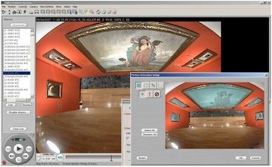
Photo credit: State of the art object protection with Acuity-vct video based system.
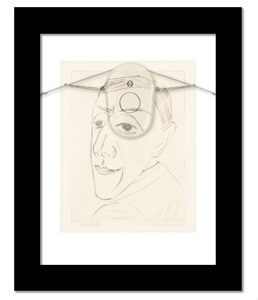
Photo credit: State of the art object protection with ArtGuard system. Transmitter hidden behind the picture and attached to hang wires..

Photo credit: State of the art object protection with ISIS system. RFID tag is hidden behind the picture and attached to the frame. Painting can be tracked as it moves through the building.
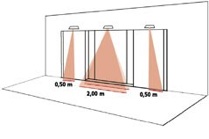
Photo credit: State of the art object protection with BEA sliding glass door detectors mounted over wall of artwork.
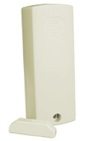
Photo credit: State of the art object protection with Inovonics wireless transmitter and sensor. Device rests behind painting or inside exhibit case.
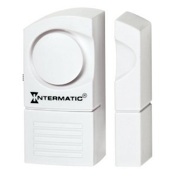
Photo credit: For museums with no other alternative, Wal-Mart and other retailers and hardware stores carry a variety of inexpensive “noise maker” alarms that can be adapted for use on paintings and exhibit cases. They make a loud noise when moved. Some use a contact and others use a vibration sensor. This device is by Intermatic. Most are less than $10 each.

Never forget that no electronic system can allow you to completely eliminate all of your guards. Alarms can’t respond to problems, only people can. Photo credit: Allied Security is a contract security provider that serves many museums. Every museum needs a good mix of guards and electronics.

Photo credit: EAS or Electronic Article Surveillance Systems are used in retail stores and libraries. They are generally not uses to protect paintings.
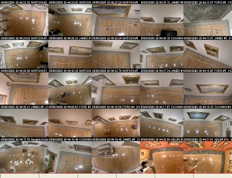
Photo credit: By placing cameras on the ceiling over gallery walls, every painting can be alarmed using advanced video analytics like this Acuity-vct system. The guard does not have to watch the monitor. The computer alerts him when a touch or attempt to steal the art occurs and the picture appears full screen on the monitor. Systems like this can help well staffed museums cut some guard costs and they can help understaffed museums make up the guard deficit, Most systems like this pay for themselves in manpower savings in five years and they protect the galleries even when no guard is present.
Use Navigation menu at top of page or go HOME from here.